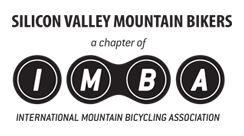With the Schwarzenegger administration preparing to close up to 100 state parks, California’s top environmental groups are quietly putting together a ballot campaign they hope will turn the bad news into a renaissance for the state’s long-struggling park system.
The Nature Conservancy, National Audubon Society, Trust for Public Land, Save-the-Redwoods League and others have raised nearly $1 million and conducted months of polling toward a November 2010 ballot measure that would increase vehicle license fees by $15 a year to fund parks.
from Mercury newsIf voters approve the measure � which needs a simple majority to pass � it would raise roughly $400 million a year, doubling the parks’ budget and making it no longer dependent on the state’s fluctuating general fund.
In exchange, all California motorists would get free admission to all state parks, which now charge up to $14 for entrance fees.
“We’re in a moment where Californians can look at a pile of lemons or we can try to be bold and turn them into lemonade,” said Elizabeth Goldstein, executive director of the California State Parks Foundation, a nonprofit group in San Francisco.
If the groups move ahead with the campaign, as expected, they would submit papers in the next few weeks and begin gathering signatures by January. They would have to gather the signatures of 433,000 registered voters by mid-April.
California has one of the oldest and most storied state parks systems
in the nation. Its 279 parks include towering redwood forests, “Baywatch” beaches in Southern California, historic missions and Gold Rush sites, and Lake Tahoe’s shoreline.
Earlier this summer, citing the state’s $24 billion budget deficit, the Schwarzenegger administration announced it would close up to 100 parks shortly after Labor Day. The closures would save roughly $14 million a year. Schwarzenegger would become the first governor in state history to close a park to save money.
Environmental groups are hoping that when people soon find favorite campsites and beach parking lots padlocked, public outrage will fuel new support for parks.
The ballot measure, which sources say is privately polling above 60 percent, is sure to meet opposition.
“I use state parks. I love them. But why should some working single mom in Compton who never goes to a state park subsidize my enjoyment of state parks? It doesn’t make any sense,” said Jon Coupal, president of the Howard Jarvis Taxpayers Association.
Coupal said state parks could save money by privatizing maintenance, and further increasing entrance fees.
John Rosica, a Morgan Hill scoutmaster, said parks could raise money if they allowed hunting, cattle grazing and dude ranch trips.
“The state has been too restrictive,” he said. “You have too many people who have squashed every good idea.”
Montana has a $4 DMV fee for parks, and Washington state has a $5 fee. Both are voluntary, but motorists must “opt out” or are automatically charged.
Previous proposals last year and this summer to raise DMV fees by $10 and $15 for parks were both defeated after Republican lawmakers and Schwarzenegger came out in opposition.
Supporters say that the public already pays for amenities including libraries, schools and highways that not everyone uses, but which enhance quality of life.
In addition to wildlife habitat, clean water, and tourism, parks also provide educational opportunities about California history for millions of schoolchildren, said Audrey Rust, president of the Peninsula Open Space Trust in Palo Alto.
“No one quite believed that they would actually, seriously close a state park, let alone 100 of them,” Rust said. “We were shocked. Then angry. We decided we had to mobilize because we don’t have a Legislature or a governor who is taking this seriously. We had to get involved.”
Rust said the coalition hopes to raise $9 million, to pay for collecting signatures, TV ads and other expenses. Many of the same groups raised $10 million in 2006 to pass Proposition 84, a $5.4 billion parks and water bond.
Those bonds provided $400 million to state parks. But bonds can only be used for upkeep and buying land, not paying rangers or other employees. A registration fee could pay for salaries.
A Mercury News review last year found the number of state park employees � 2,970 rangers, lifeguards, maintenance workers and others � has remained unchanged since 1988 even as state park visitation has grown by 5.3 million people. The maintenance backlog for state parks now totals $1.2 billion.
“For the last 20 years all we have seen is gradual and then increasing cuts. There is nothing left to cut,” Rust said. “Things we have come to expect, like campfire programs and even regular cleaning of restrooms, have been eliminated. This is a key moment to rejuvenate the system.”
Contact Paul Rogers at 408-920-5045.



